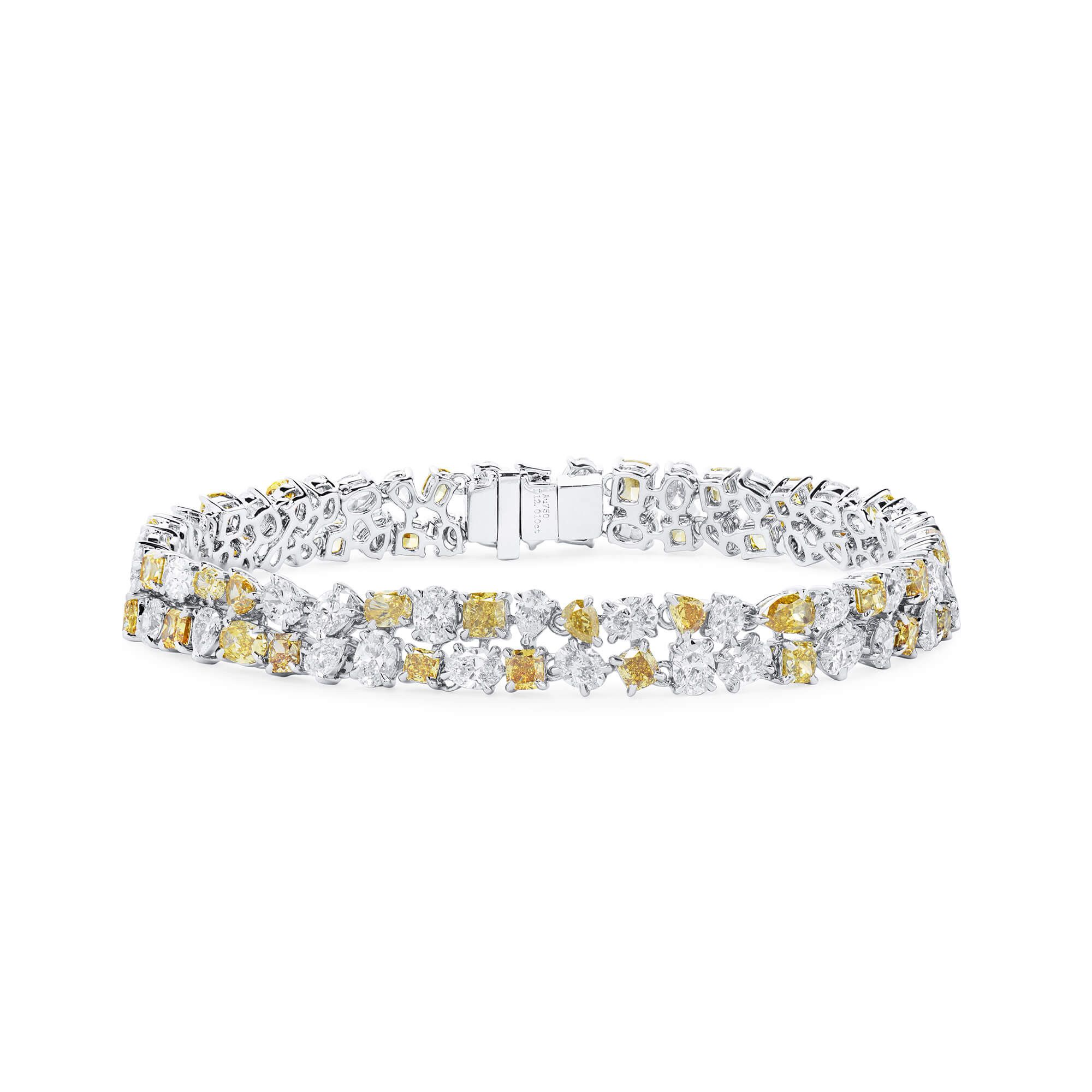Diamonds often contain quantities of trace elements that can take the place of some of the carbon atoms. The presence of trace elements scattered throughout the atomic structure are the source of colour within diamonds. This leads to diamonds being categorized into different types depending on the amount, formation or type of trace element that is present. The first level of classification is Type I (One) and Type II (Two).
The difference between Type I and Type II diamonds is the presence of Nitrogen (N) as a trace element within the diamond structure. The two diamond types can be expanded further to form the second level of classification: Type Ia and Type Ib as well as Type IIa and Type IIb. TYPE I Type I diamonds have a significant amount of nitrogen atoms within the crystal structure, up to 0.2%. Type I is further divided between Type IA & Type IB. TYPE IA Nitrogen atoms within the crystal structure are present as pairs or small groups (threes and fours) called aggregates. Diamonds primarily containing pairs or aggregates of four nitrogen atoms are colourless, whereas diamonds primarily containing aggregates of three nitrogen atoms appear yellow. the majority of all diamonds (98%) are type Ia and range from colourless to a moderate saturation of yellow, also known as the d-z colour scale. Within the diagram the 'v' stands for vacancy which is a free space within the atomic structure.
TYPE IB Nitrogen atoms are present as isolated (single) atoms throughout the crystal structure. This results in the absorption of light at the blue end of the spectrum allowing for a very highly saturated yellow colour. Type Ib diamonds account for approximately 0.1% of all diamonds. TYPE II Type II diamonds do not contain a significant amount of nitrogen. Type II are further classified into Type IIA & IIB TYPE IIA They are almost purely formed from carbon atoms, containing insignificant amounts of nitrogen and contain no other trace elements. Less than 1% of diamonds are classified as Type IIa.
Theoretically they are colourless, however can be colours other than yellow due to a structural defect known as plastic deformation( Plastic deformation is a phenomenon that occurs after the diamond growth process. It is caused when shear stress is applied to the diamond structure.) Less than 1% of diamonds are classifies as Type IIa. TYPE IIB The diamonds crystal structure contains Boron (B) as the major trace element. The presence of boron causes these diamonds to absorb red, orange and yellow light producing a blue or grey appearance. Less than 0.1% of diamonds are Type IIb. Diamonds displaying a blue colouration have been discovered without traces of boron within them. Instead, high concentrations of hydrogen atoms were discovered. Hydrogen is also considered to be a cause of a violet colour in diamonds, which are almost exclusively type Ia.


